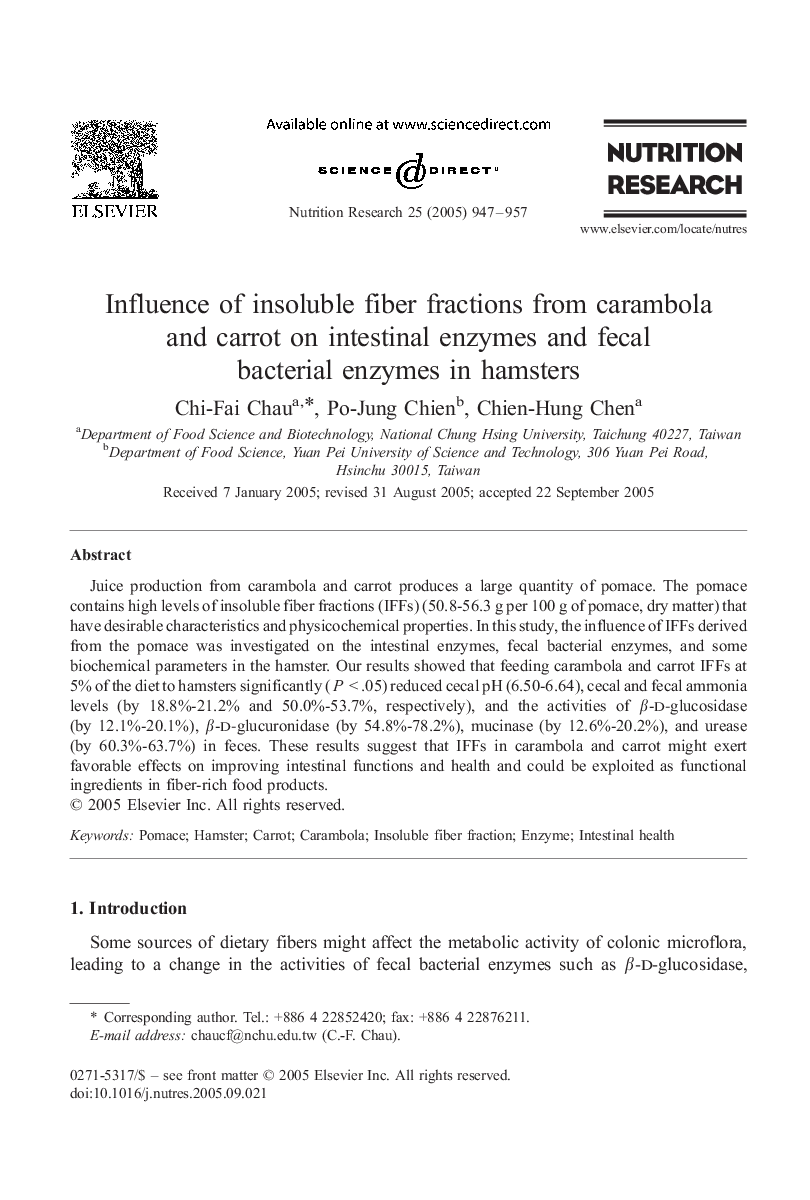| Article ID | Journal | Published Year | Pages | File Type |
|---|---|---|---|---|
| 9119088 | Nutrition Research | 2005 | 11 Pages |
Abstract
Juice production from carambola and carrot produces a large quantity of pomace. The pomace contains high levels of insoluble fiber fractions (IFFs) (50.8-56.3 g per 100 g of pomace, dry matter) that have desirable characteristics and physicochemical properties. In this study, the influence of IFFs derived from the pomace was investigated on the intestinal enzymes, fecal bacterial enzymes, and some biochemical parameters in the hamster. Our results showed that feeding carambola and carrot IFFs at 5% of the diet to hamsters significantly (P < .05) reduced cecal pH (6.50-6.64), cecal and fecal ammonia levels (by 18.8%-21.2% and 50.0%-53.7%, respectively), and the activities of β-d-glucosidase (by 12.1%-20.1%), β-d-glucuronidase (by 54.8%-78.2%), mucinase (by 12.6%-20.2%), and urease (by 60.3%-63.7%) in feces. These results suggest that IFFs in carambola and carrot might exert favorable effects on improving intestinal functions and health and could be exploited as functional ingredients in fiber-rich food products.
Related Topics
Life Sciences
Biochemistry, Genetics and Molecular Biology
Endocrinology
Authors
Chi-Fai Chau, Po-Jung Chien, Chien-Hung Chen,
